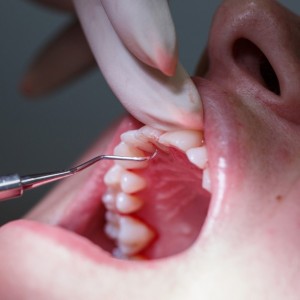
Polymerase chain reaction A molecular diagnostic tool in periodontology
This review discusses the principles of polymerase chain reaction (PCR) and its application as a diagnostic tool in periodontology. The relevant MEDLINE and PubMed indexed journals were searched manually and electronically by typing PCR, applications of PCR, PCR in periodontics, polymorphism studies in periodontitis, and molecular techniques in periodontology. The searches were limited to articles in English language and the articles describing PCR process and its relation to periodontology were collected and used to prepare a concise review. PCR has now become a standard diagnostic and research tool in periodontology. Various studies reveal that its sensitivity and specificity allow it as a rapid, efficient method of detecting, identifying, and quantifying organism. Different immune and inflammatory markers can be identified at the mRNA expression level, and also the determination of genetic polymorphisms, thus providing the deeper insight into the mechanisms underlying the periodontal disease.
A clinical diagnosis of periodontal disease is made by measuring the loss of connective tissue attachment on the root surface (clinical attachment loss) and loss of alveolar bone (radiographic bone loss). But the clinical diagnosis does not indicate the cause, pathogenesis, clinical course, progress, and prognosis of the disease. In addition to the conventional examination, various diagnostic methods play a vital role in the confirmation of the clinical diagnosis.
The traditional culture methods have inherent advantages, but have shortcomings, including the need to preserve bacterial vitality, the inability to detect low numbers of microorganisms with a detection limit averaging 103–104 bacterial cells, labor intensiveness, need for experienced personnel, strict sampling, transport conditions, and a prolonged period of time before results. Other microbiological tests such as dark field microscopy are not able to detect the nonmotile periodontal pathogen, and immunodiagnostic methods like flow cytometry, immunofluorescence assay, etc., and enzymatic assays can lead to false positive results and cross-reactions.
The molecular biological techniques analyze deoxyribonucleic acid (DNA), ribonucleic acid (RNA), and protein. Restriction fragment length polymorphism (RFLP) was the DNA profiling genetic technique that exploited variations in homologous DNA sequences; it was laborious, time-consuming, expensive, and needed large sample. The nucleic acid probe, a nucleic acid molecule artificially synthesized and labelled for detection of a specific organism has the limitation of cross-reactivity. Hybridization refers to the pairing of complementary DNA strands to produce double stranded nucleic acid and the checkerboard DNA-DNA hybridization technology used for epidemiological research, and ecologic studies require sophisticated laboratory equipment and expertise. Polymerase chain reaction (PCR) overcomes the above limitations and is capable of detecting even one copy of the searched DNA targets from clinical microbiologic samples.
The subgingival microbiota in patients with periodontitis is complex and the difference in plaque composition serves as the basis for the clinical application of microbiological techniques in the diagnosis and therapy control of progressive and refractory forms of periodontitis. The development of PCR has generated vast benefits in genetic analysis for the study of gene expression and diagnosis of genetic diseases. Genetic analysis using PCR for identification of susceptibility of an individual to periodontitis will help in the determination of the type and frequency of treatment. Studies based on PCR for the determination of mRNA expression of various immune and inflammatory markers are useful in understanding the pathogenesis of periodontitis.
The MEDLINE and PubMed databases were searched manually and electronically in English language by typing PCR, applications of PCR, PCR in Periodontics, Polymorphism studies in Periodontitis, and molecular techniques in periodontology. Out of 248 searched articles, 88 articles describing PCR process and its relation to periodontology were used to prepare a concise review. The aim of this review is to discuss the principles, advantages, applications, and limitations of PCR in the field of periodontology with their future perspectives.
Authors: Maheaswari, Rajendran; Kshirsagar, Jaishree Tukaram; Lavanya, Nallasivam
Source: https://journals.lww.com/
 Related articles
Related articles
Periodontology 30 October 2025
To update the competences and learning outcomes and their evaluation, educational methods and education quality assurance for the training of contemporary specialists in periodontology
Periodontology 10 October 2025
Continuous professional development (CPD) in Periodontology refers to the overall framework of opportunities that facilitate a life-long learning practice, driven by the learner-practitioner and...
Periodontology 10 September 2025
To update the findings of a systematic review from the year 2016 on the evidence for the accuracy and potential benefits of cone beam computed tomography (CBCT) in periodontal diagnostics.
Periodontology 27 August 2025
The purpose of this study was to evaluate the views, knowledge and preferences of a large sample of practising dentists in periodontics, focusing specifically on the treatment of gingival recessions,...
Aggressive periodontitis is a destructive disease characterized by the following: the involvement of multiple teeth with a distinctive pattern of periodontal tissue loss; a high rate of disease...
 Read more
Read more
Much like EMTs rushing to the scene after an accident, stem cells hurry to the site of a skull fracture to start mending the damage. A new finding has uncovered the signaling mechanism that triggers...
Products 05 November 2025
SimplyTest has launched a groundbreaking saliva-based test to detect high-risk strains of oral human papillomavirus (HPV), a major cause of oropharyngeal cancers.
News 05 November 2025
Perimetrics, Inc., a dental technology company pioneering quantitative diagnostics, announced today that the U.S. Food and Drug Administration (FDA) has granted clearance for the InnerView...
News 05 November 2025
On October 15, open enrollment for Medicare began nationwide. Hundreds of thousands of seniors in New Jersey will once again face the challenge of finding the right Medicare coverage, including the...
Digital Dentistry 04 November 2025
Digitalisation is an expanding field in dentistry and implementation of digital teaching methods in dental education is an essential part of modern education.















